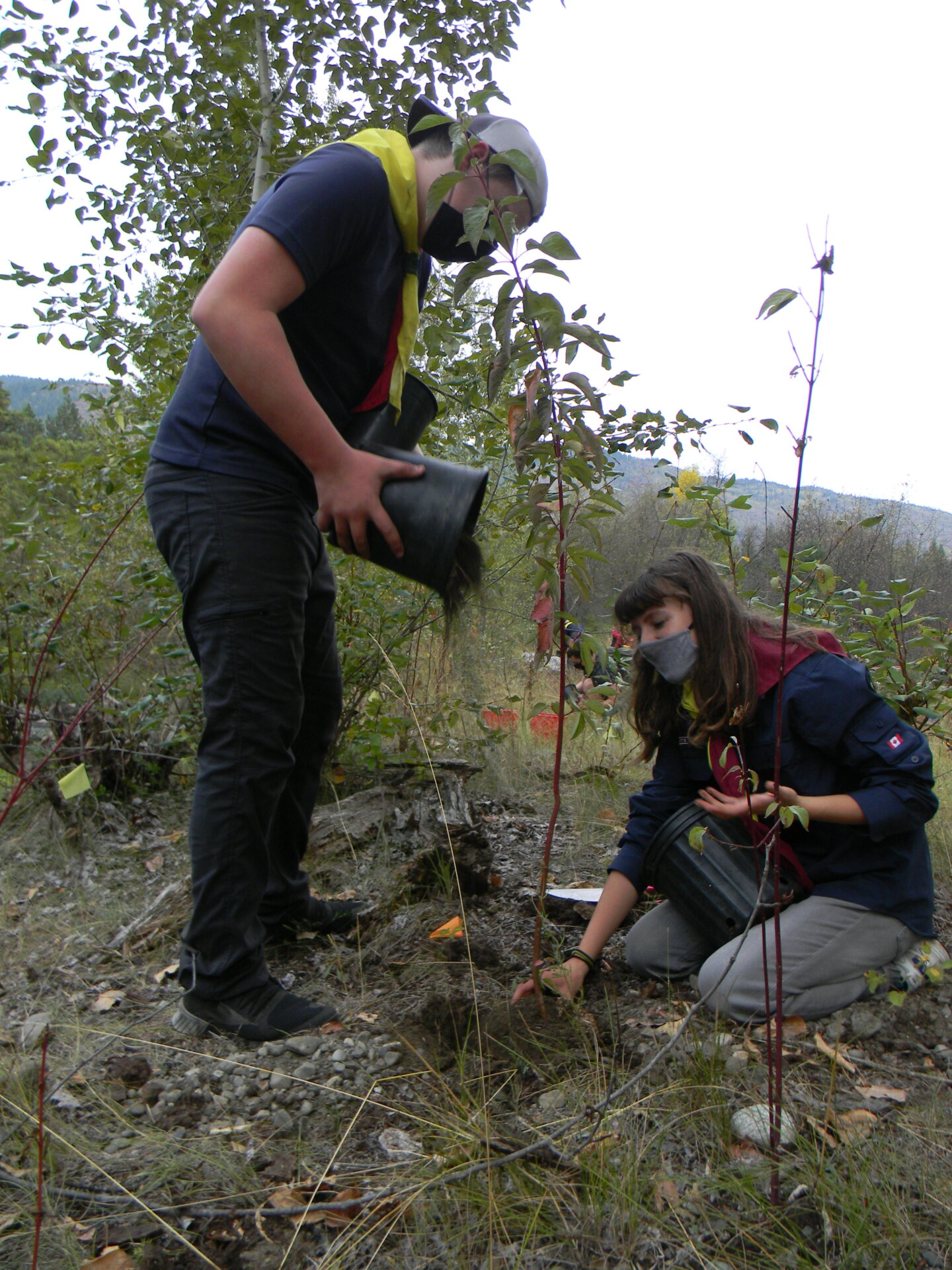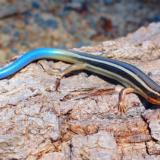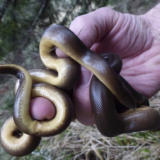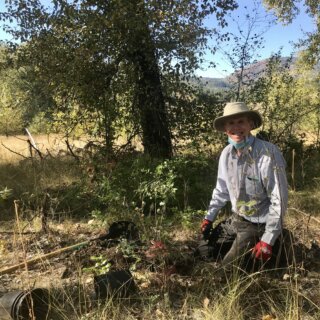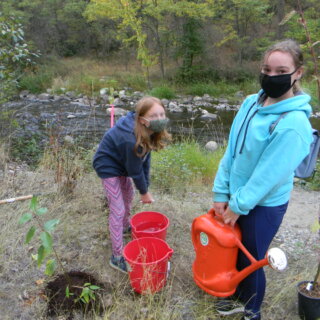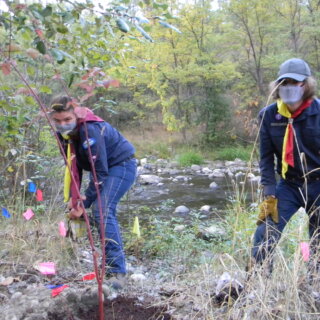Restoration efforts will improve wildlife habitat and fight erosion.
For the second year in a row the Central Kootenay Invasive Species Society (CKISS) organized restoration efforts at Beaver Creek Provincial park. With the help of community and youth volunteers a targeted area at Beaver Creek previously dominated by invasive plants was replanted with over 200 native species. The goal of the project is to improve the habitat for the Western skink, rubber boa and American racer, species at risk that call the area home.
- Western Skink
- Rubber Boa
- North American Racer
In addition, by planting along the creek bed the organization hopes to reduce erosion. Native plants and trees prevent erosion by stabilizing soil along creek beds. Soil from eroding land that washed into streams negatively effect water quality. The muddy water can cut off light to aquatic plants, clog fish gills and degrade fish habitat. Native vegetation that grows along rivers, creeks and streams are important to aquatic ecosystems. They provide shelter, food and the shade creates ideal water temperatures for aquatic animals.
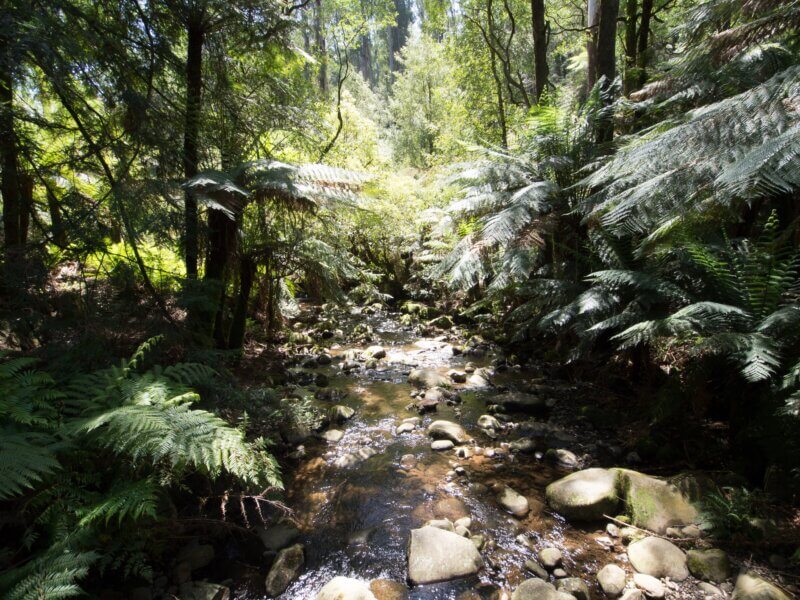
Community Involvement
Community weed pull events with volunteers and school groups were scheduled for the spring but needed to be cancelled due to Covid-19 restrictions. When the province moved to phase three of their restart plan, the CKISS started to plan planting events at the Park with additional safety protocols and disinfection polices in place to keep everyone safe.
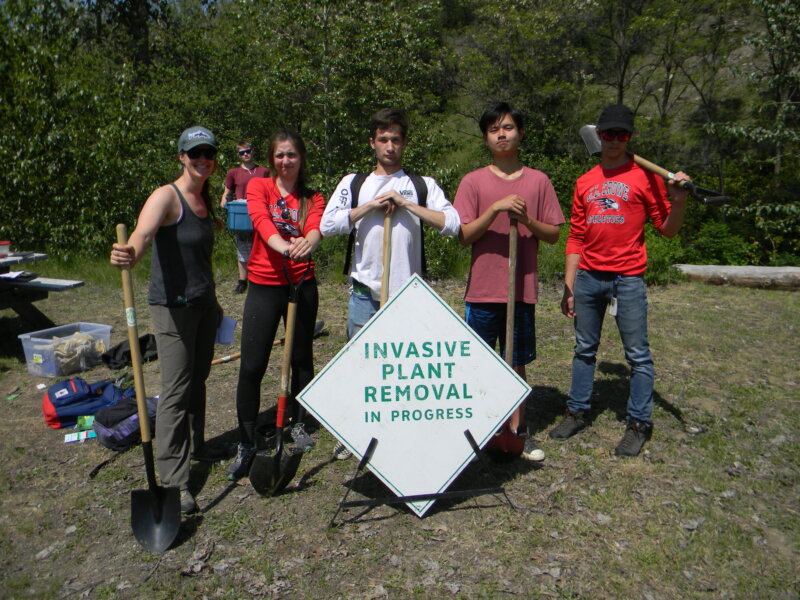
On a beautiful sunny day in late September 2020, CKISS staff were joined by four keen volunteers for a two hour ‘planting party’. The volunteers answered a last minute call from CKISS after the original school group that was scheduled to volunteer with CKISS cancelled for reasons out of their control. On October 1 2020 a group of volunteers from the 1st Robson Scouts and Ventures lent a helping hand and completed the planting task.
- It was a successful planting bee at Beaver Creek thanks to community volunteers like Joe pictured above.
Ecological and Cultural Values of Native Plants Chosen for Beaver Creek Restoration
Native plant diversity is vital to an ecosystem’s health! They provide habitat for wildlife, can help fight climate change and they are beautiful to look at. In addition native plants have cultural value. For thousands of years First Nation groups in BC have used plants for medicine, supplies for tools and food.
Tall Oregon Grape (Mahonia aquifolium)
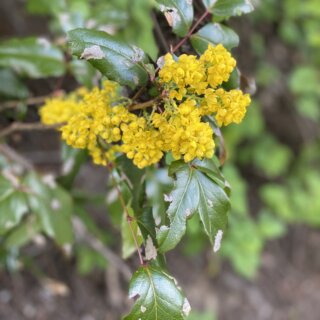
- The Indigenous of the interior extracted a bright yellow dye used to decorate baskets and clothing. The roots were used to help with kidney issues, an eye wash and a blood cleanser.
- The berries are tart, they are best used to make jellies and juices.
- Attracts pollinators and it’s a food source for birds an small mammals.
- Small wildlife uses the plant for shelter/protection thanks to the spiny leaves.
Saskatoon (Amekanchier alnifolia)
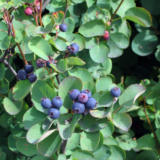
- An excellent winter food source for hoofed mammals and birds eat the berries in August.
- Most widely used berry for the Indigenous people in the interior, they were eaten both fresh and dried.
- Dried berries were a common trading items with Coastal tribes.
- Medicinal drink of maple and Saskatoon sticks given to women following child birth.
- Preferred wood to make arrows and pipestems.
Choke Cherry (Prunus virginiana)
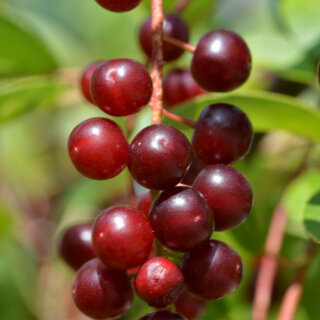
- Excellent food source for a variety of birds
- Interior Indigenous people enjoyed choke cherries fresh as a snack, dried in the winter or as a paste for cakes.
- Choke cherry juice was consumed to gain strength after sickness and as a medicine to cure diarrhea.
- Choke cherry wood was used for making handles, arrows, bows and digging tools and bark was used for decorating basket rims.
Black Cottonwood (Populus balsamifera)
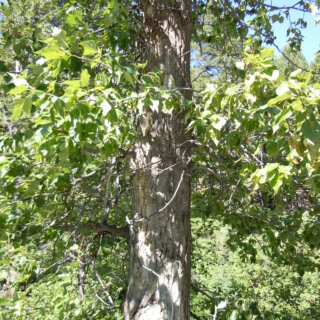
- Indigenous people used the cottony seed fluff as a stuffing for pillows
- Inner bark used to make soap and medicinal tea.
- The sticky resin on the buds in the Spring was used as an ointment for cuts and used as glue.
- Large trees were used to make dugout canoes
- Ecological value: important stabilizer of river banks and enhances fish habitat
- Cottonwoods provide shade which keeps water temps low
- Its decaying leaves provide a rich source of nutrients for insects, an important food source for salmon and trout.
- Twigs and buds provide food for deer, moose and elk.
- Beavers prefer to eat the inner bark and use the stems to construct dams
- Woodpeckers nest in cavities in the trunks of dead and decaying tress
Red-Osier Dogwood (Cornus stolonifera)
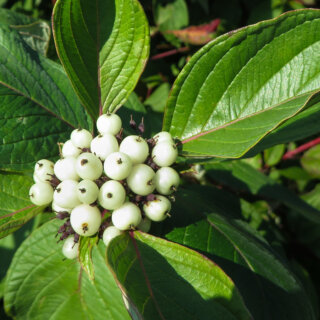
- Ktunaxa made a sweet and sour dish out of dogwood berries , Saskatoon and sugar.
- Other First Nations groups used berries as a mouthwash, inner bark was boiled and used for any kind of sickness or applied sores and swelling to manage the pain.
- Branches used to make fish traps, poles, salmon stretches and sweathouses.
- The twigs, leaves and buds provide food for hoofed mammals, especially important in winter when food sources are scarce.
- Red-osier dogwood is highly recommended for planting along the edges of ponds and streams, as its spreading roots help prevent soil erosion
Black Hawthorn (Crataegus douglasii)
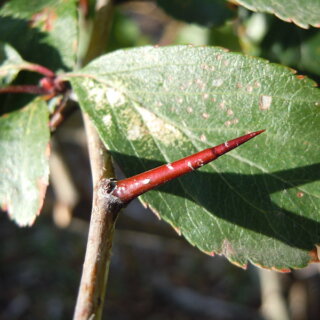
- Interior Native people used the thorns of black hawthorn for many purposes: probing skin blisters/boils, piercing ears, fishhooks and game pieces.
- Wood is very hard and fine-grained, it was used to make tool handles and weapons.
- Fruit was dried and used to ease symptoms of diarrhea and stomach pains.
- Provide food and shelter for a variety of wildlife.
Snowberry (Symphoricarpos albus)
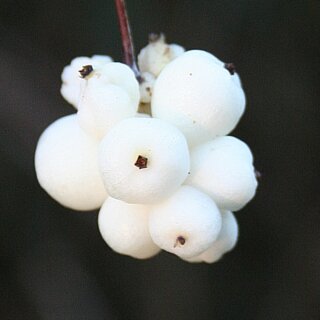
- First nations hollowed out the stems to make pipes, squeezed ripe berries into sore eyes before sleep and the berries were also used as a cure for diarrhea.
- In several interior languages the name for this plant means “ghost or corpse berry”. Many First Nations group consider this berry toxic and do not eat it.
- Berries remain on the plant throughout the winter, providing an important source of food for birds.
Nootka Rose (Rosa nutkana)
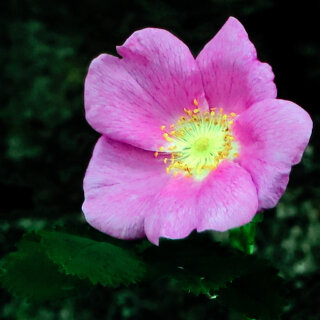
- Foliage and young stems are a food source for large hoofed mammals.
- Interior Salish believe this plant offers protection from bad influences
- Wood used to make arrows
- Rose leaves were chewed and put on inspect bits to alleviate pain and swelling
Baldhip Rose (Rosa gymnocarpa)

- Used by first nations for medicinal purposes to cure many sicknesses and a soothing wash for sore eyes
- It was used spiritually to protect people from their deceased relatives.
- Provide food for pollinators, birds and mammals
Sources:
- All Living Things: A Ktunaxa Ethnobotany Handbook
- Plants of Southern Interior British Columbia and the Inland Northwest
This project was made possible by funding from Environment Canada’s Eco Action Community Funding Program and Columbia Basin Trust & BC Parks.

